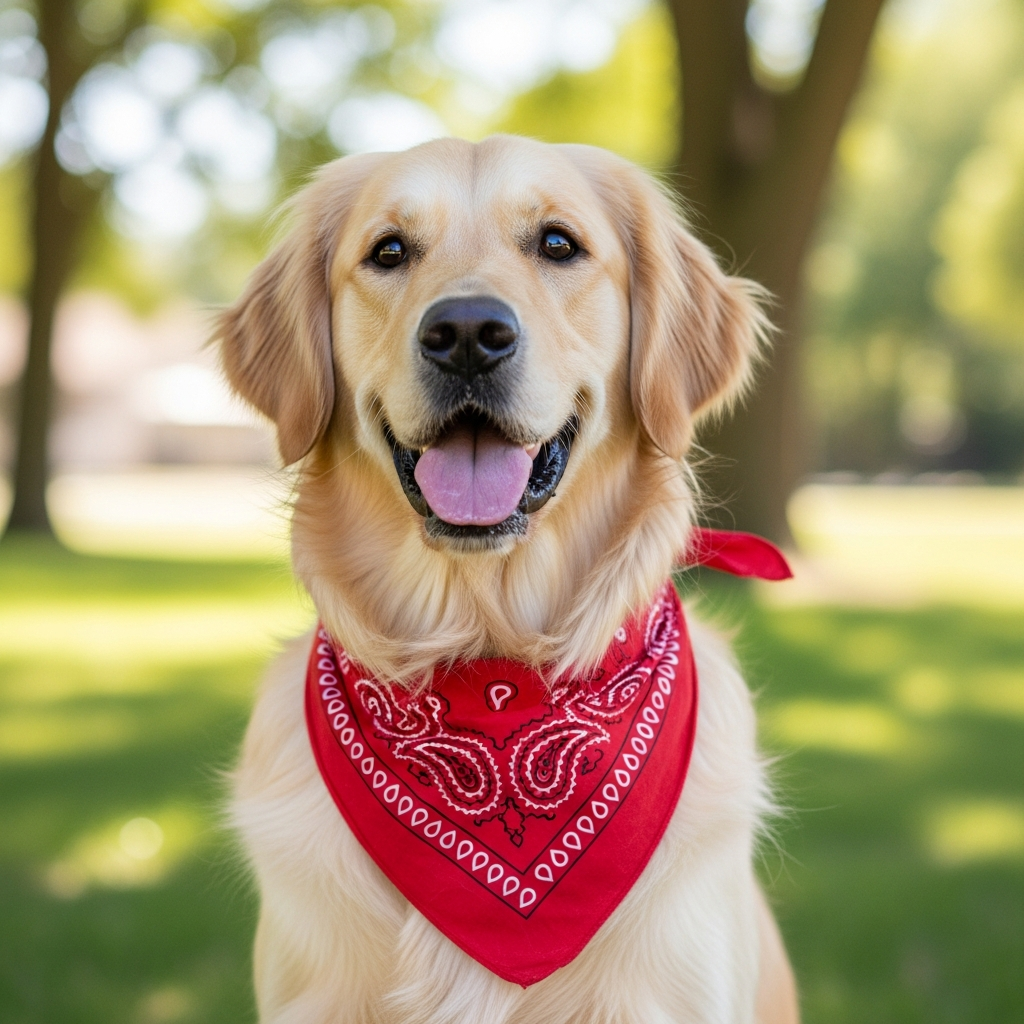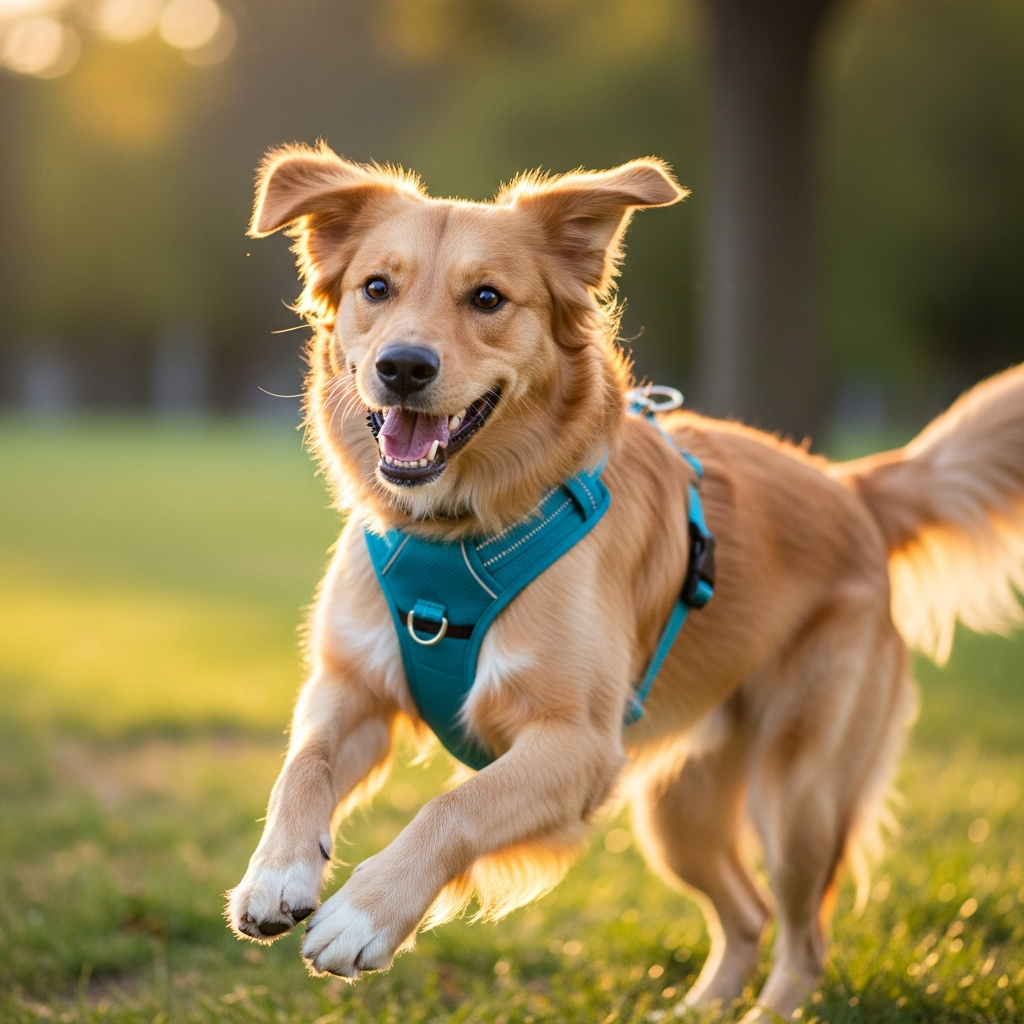Your brand's harness looks great, but customers complain about pulling. This common problem can lead to returns and damage your reputation, making you question the effectiveness of your own designs.
Yes, a well-designed harness can significantly improve a dog's behavior on a leash. By providing better control and redirecting pulling forces without putting pressure on the sensitive neck area, it creates a safer and more positive walking experience for both the dog and the owner.
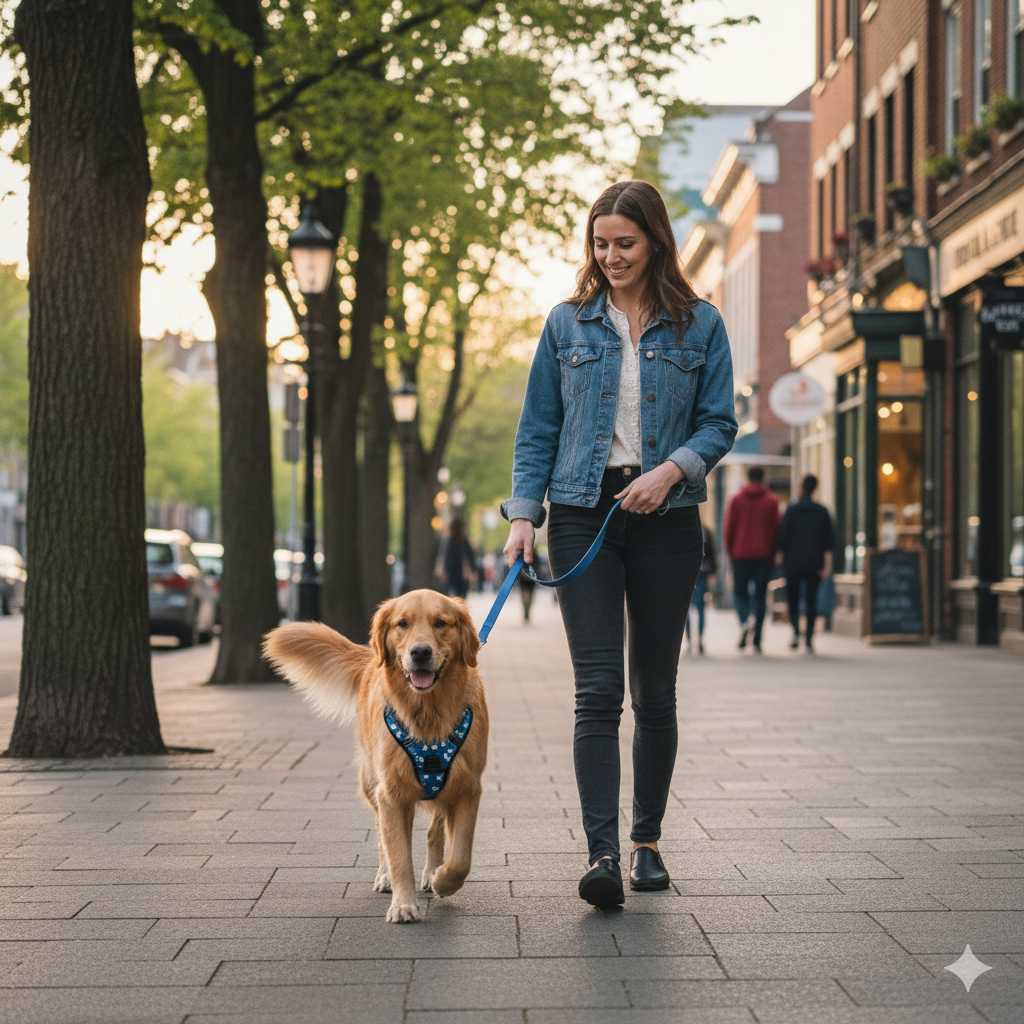
As product designers, we're not just creating accessories; we are engineering tools that shape the relationship between a person and their dog. A harness is a primary point of communication during a walk. The right design can make that communication clear and gentle, while a poor design can create confusion, discomfort, and even encourage the very behaviors you want to prevent. It's our job to understand the mechanics behind this interaction. Let's explore how specific design choices can directly influence a dog's behavior on the leash.
How does a harness influence a dog's pulling behavior?
You've designed a sturdy harness, but it doesn't stop pulling. Owners get frustrated, and your product gets labeled as ineffective. This is a common failure point for many standard designs.
A front-clip harness changes the physics of pulling. When the dog pulls, it gets turned gently back towards the owner. This redirection discourages pulling. In contrast, back-clip harnesses can trigger a dog’s natural instinct to pull against pressure, making the problem worse.
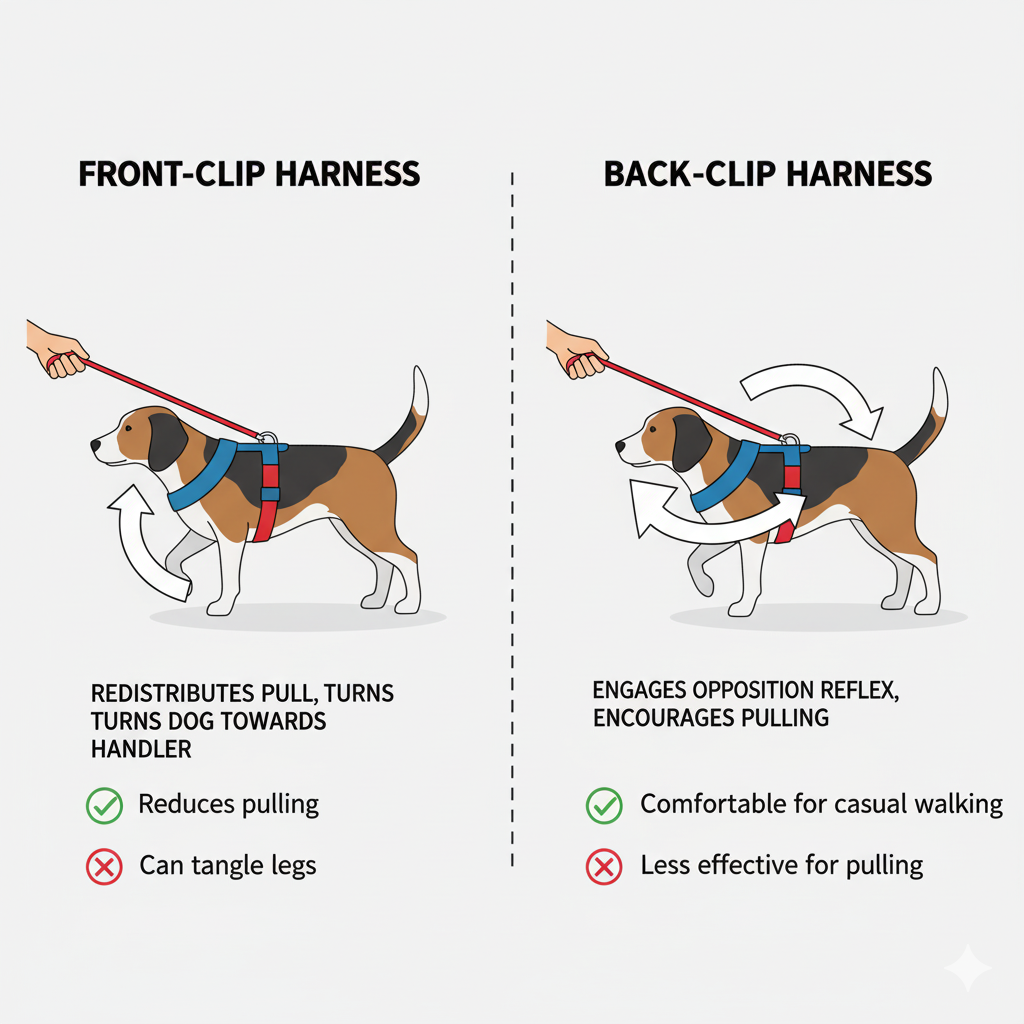
I learned this lesson firsthand early in my career. We were developing a line of harnesses for a brand focused on large, powerful breeds. Our initial prototypes were all back-clip designs, built for maximum strength. But during testing, the dogs pulled just as much, if not more. They were simply using their full chest and shoulder strength. It wasn't until we introduced a prototype with a reinforced D-ring on the chest strap that we saw a dramatic change. The handlers had more control, and the dogs seemed to learn "pulling gets me nowhere" much faster. It proved to me that the placement of a single component can redefine the entire function of a product.
The Physics of Control: Front-Clip vs. Back-Clip
The key difference lies in where the leash applies pressure. It's a simple concept with a huge impact on dog behavior.
| Harness Type | Point of Leverage | Dog's Reaction to Pulling | Best Use Case |
|---|---|---|---|
| Back-Clip | Center of the back | Engages opposition reflex, often encouraging pulling | Relaxed walks with a non-pulling dog, running |
| Front-Clip | Center of the chest | Redirects momentum, turning the dog sideways | Leash training, managing strong pullers |
| Multi-Function | Both front and back | Offers versatility for different situations | All dogs, from training to casual walks |
As a designer, your challenge with front-clip harnesses is to prevent the harness from shifting or twisting. This means focusing on a "Y-shaped" design that fits snugly around the shoulders and chest, ensuring the D-ring stays centered.
Can harness design impact a dog's anxiety or reactivity?
A dog seems stressed and reactive on walks. The owner blames everything else, but what if your harness design is contributing to the problem through poor fit or pressure points?
Yes, a properly fitted harness can have a calming effect by distributing gentle, constant pressure, much like a weighted blanket. Conversely, a design that restricts shoulder movement or chafes under the legs can increase a dog's stress, anxiety, and reactivity on walks.
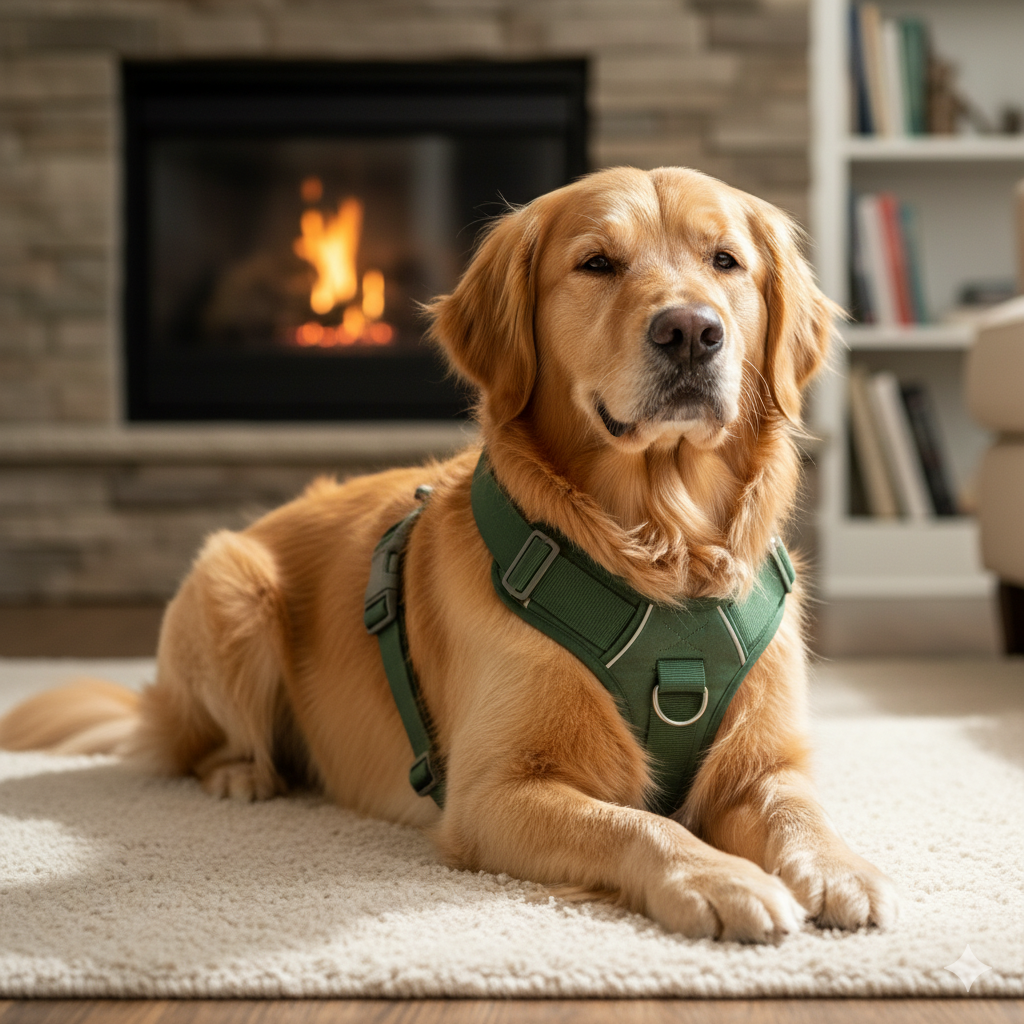
I once consulted for a company that was getting feedback about their harness causing skin irritation. Their design used thin nylon straps that, while strong, would dig into the dog's skin, especially in the sensitive area behind the front legs. This constant discomfort was making dogs more agitated on walks. We redesigned the harness with wider straps and added soft neoprene padding in those key friction zones. The change was immediate. The new design not only stopped the chafing complaints but also received positive feedback about dogs seeming more relaxed. It's a powerful reminder that comfort is not a luxury feature; it's essential for a dog's well-being and behavior.
Designing for Comfort and Calm
To create a harness that soothes rather than agitates, you must focus on fit and material.
- Anatomical Fit: A "Y-shaped" front is crucial. It sits on the dog's breastbone and avoids putting any pressure on the delicate throat area. It also allows for a full range of motion in the shoulders, which is vital. A dog that feels physically restricted is more likely to feel anxious.
- Pressure Distribution: Use wide straps with soft padding, especially over the chest and around the girth. This spreads pressure evenly across the dog’s strongest parts, avoiding sharp or digging sensations that can cause pain and trigger a negative reaction.
- Material Selection: Breathable materials like air mesh are excellent for lining. They prevent overheating and moisture buildup, which can lead to skin problems and general discomfort.
A harness that provides a secure, "hugging" sensation can help an anxious dog feel safer in overwhelming environments.
What design features improve communication between dog and owner?
Owners feel they are just restraining their dog, not guiding them. This lack of clear communication during a walk creates a cycle of pulling, yanking, and frustration for both parties.
Features like a prominent traffic handle and strategically placed leash clips transform a harness from a simple restraint into a communication tool. A handle provides immediate close control, while a front clip offers a subtle way to redirect the dog’s attention without shouting or yanking.
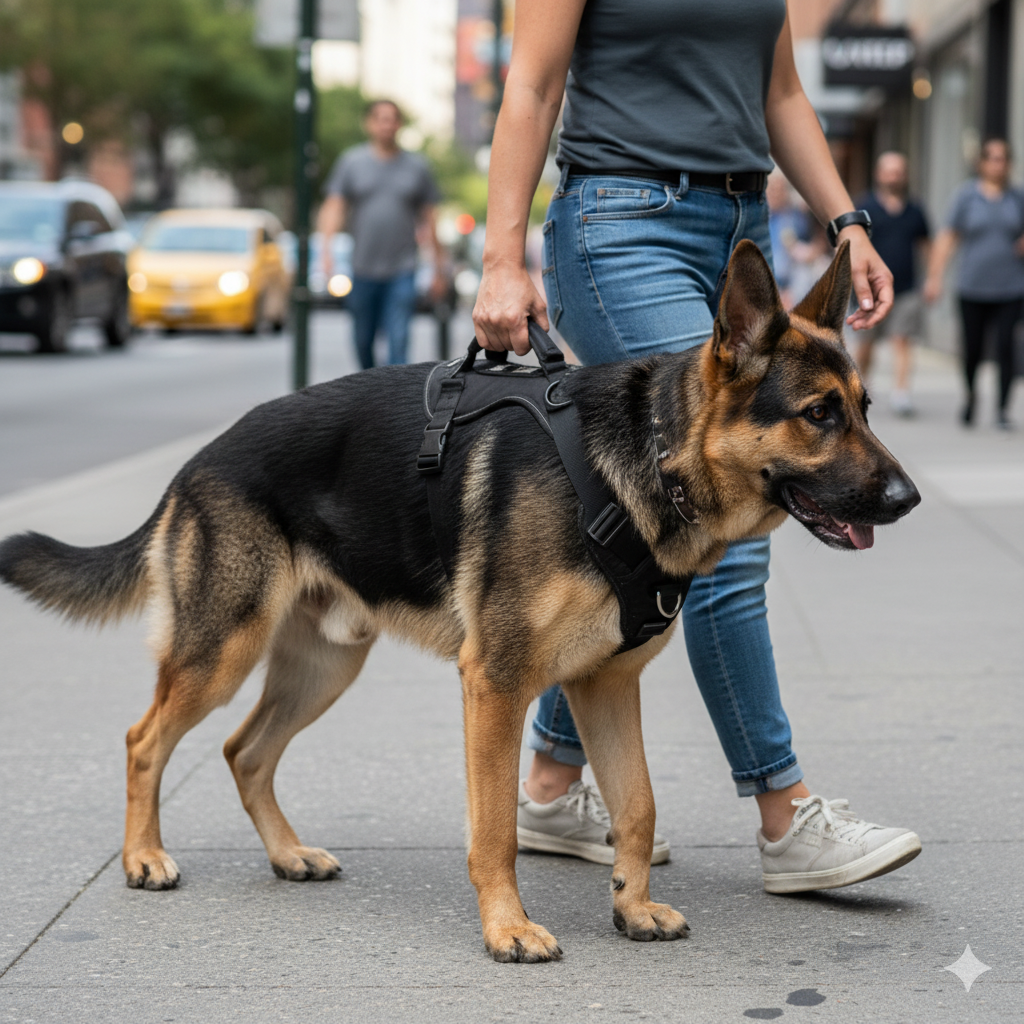
The traffic handle is one of the most underrated features in harness design. During a project for an urban pet brand, we added a padded handle on the back of all their harnesses. The goal was to help city dwellers navigate busy sidewalks and public transport. The feedback was overwhelmingly positive. Owners reported feeling more connected and in control. They could hold their dog close in a crowd or prevent them from lunging at a squirrel with a simple, calm lift of the handle. This direct physical contact is a much clearer signal than a sharp pull on a six-foot leash. It shows that thoughtful design can create a better, more intuitive language between a person and their pet.
Building a Bridge with Design
Your design choices can create clear points of contact that enhance an owner's ability to guide their dog.
| Design Feature | Communication Function | Design Consideration for You |
|---|---|---|
| Traffic Handle | Provides immediate, close, and clear physical guidance. | Must be generously sized, padded, and reinforced. |
| Front D-Ring | Gently says "let's slow down and check in with me." | Must be securely attached and positioned to stay centered. |
| Back D-Ring | Signals a relaxed, "go ahead and explore" walk. | Should be placed to avoid leash tangling in dog's legs. |
By incorporating these elements, you are designing a product that empowers the owner. You give them the tools to guide their dog confidently and humanely. This builds a better relationship and, as a result, a better-behaved dog.
Conclusion
A harness won't fix behavior overnight, but a thoughtful design provides the tools for better communication and control. This leads to more effective training and a better-behaved dog.
Cindy Long is the Sales Manager of Raysunpets and a pet lover with over 12 years of experience in exporting pet products. She specializes in providing customized dog chest carriers, leashes and pet accessory solutions for the European and American markets, always focusing on the real needs of customers and pets, and is committed to creating high-quality, practical and comfortable products that allow fur kids to live happier lives.

